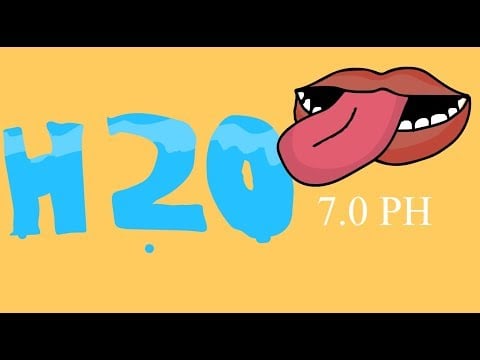Water’s supposed to taste like… nothing. So when your tap suddenly tastes metallic, salty, or straight-up swampy — it’s jarring.
Don’t panic. Most bad-tasting water isn’t dangerous, but it is trying to tell you something. Whether you’re on city water or a private well, there’s usually a simple fix — and we’ll walk you through it.
✅ Key Takeaways
- 💧 Bad taste can come from minerals, chemicals, or bacterial buildup
- 🧪 Some causes are harmless — others may need attention or testing
- 🛠️ The right filter can solve most taste issues (if you match it to the cause)
- 📉 Taste alone doesn’t reveal if water is unsafe — testing is the only way to know
- 🚱 Sour or metallic taste? It could point to acidic water or pipe corrosion
😖 What’s Making Your Water Taste Weird?
Bad taste isn’t just about being picky — it’s often the first clue that something’s off in your plumbing or water supply. Here’s what those flavors could mean and what to do next.
🧪 Chemical or Bleachy Taste
- City water? You’re probably tasting chlorine — added to kill bacteria. Some neighborhoods closer to treatment plants get higher doses, making it more noticeable.
- Well water? That chemical taste could point to pesticide runoff, fuel leaks, or volatile organic compounds (VOCs) from farms or industrial sites nearby.
Fix it with: a high-quality carbon filter that removes chlorine, VOCs, and common chemical contaminants.
🍭 Sweet or Salty Taste
These odd flavors are often linked to high TDS (total dissolved solids) — typically minerals like calcium, magnesium, chloride, or sulfate.
- Sweet: usually calcium-heavy water
- Salty: often sulfate or chloride-heavy (especially in coastal wells)
Neither is dangerous, but they can be a clue your water is hard or unbalanced.
Fix it with: a TDS meter to check mineral levels, and a water softener or RO system if needed.
🥚 Rotten Egg Smell or Taste
This one’s unmistakable — it smells like sulfur and tastes just as bad. The culprit is usually hydrogen sulfide gas, which forms when organic matter breaks down in well systems.
- Most common in: Private wells
- What causes it: Decaying matter or sulfur-reducing bacteria
- Is it dangerous? Not usually — but it makes water nearly undrinkable
Fix it with: an oxidizing filter or chlorination system paired with a carbon filter to remove both the smell and taste.
🌿 Earthy or Musty Taste
Likely culprits:
- Organic debris in shallow wells
- Iron bacteria creating biofilm in pipes
- Sediment stirred up from silty soil or low well screens
It’s common, but persistent earthy taste could mean a bacteria buildup in your plumbing or pressure tank.
Fix it with: a spin-down sediment filter, chlorination, and flushing your system. If iron bacteria is involved, specialized filtration may be needed.
🍋 Sour or Bitter Flavor
This usually points to low pH (acidic water). It can also cause:
- Pipe corrosion
- Leaching of copper or lead
- Metallic or tangy taste
Fix it with: a pH neutralizing system that raises pH and protects your pipes.
⚙️ Metallic Taste
A sign of:
- Iron, copper, or manganese in your water
- Pipe corrosion (especially in older homes)
- Rust in your plumbing or water heater
Fix it with: a filter rated for heavy metals, and test your pH — acidic water often accelerates corrosion.
🧬 What If the Problem Isn’t in the Taste?

Here’s the twist: some of the most dangerous contaminants in water have no taste, smell, or color at all.
You might be worried about a funky flavor — but your water could contain things like lead, arsenic, bacteria, or PFAS without giving any warning signs. That’s why taste alone isn’t a reliable safety check. solutions.
🧪 Should You Test Bad-Tasting Water?
Absolutely — especially if:
- The taste suddenly changed
- You’re on a private well
- You live near farms, factories, or old infrastructure
The EPA regulates over 90 contaminants in public water, but testing mostly stops at the treatment plant. Contamination can happen after that — inside your pipes, water heater, or plumbing.
🏡 City vs. Well Water Testing
- City water: Ask your local provider for a Consumer Confidence Report (CCR). It breaks down what’s in your tap water — including: chlorine, pH, and any known contaminants. If your pipes are old (lead, copper, galvanized steel), you may still want to test for metals and TDS inside your home.
- Well water: You’re fully responsible for testing. The CDC recommends checking annually for coliform bacteria, nitrates, and any region-specific risks (like iron, arsenic, or sulfur). If your water tastes off and you can’t pinpoint why, a full well screening is your best move.
🧪 Pro Tip: Choose the Right Test
We recommend TapScore by Simplelab for fast, accurate results. Whether you’re on well or city water, you’ll get:
- A customized test kit based on your source and location
- Lab-tested results in just a few weeks
- Actionable advice from real water quality experts
👉 It’s peace of mind — without the guesswork.
🛠️ How to Get Rid of Unpleasant Tastes and Smells in Drinking Water

Weird-tasting water isn’t something you have to live with — the right filter can fix it. But not every system works on every issue. A rotten egg smell needs different treatment than bitter or metallic water.
Let’s break down the best filter types based on what’s actually causing the bad taste:
| 🧰 Filter Type | 💧 What It Fixes | 🔎 Notes |
|---|---|---|
| Sediment Filter | 🪨 Dirt, rust, sand, debris | Best for earthy tastes from shallow wells or sediment buildup |
| Carbon Filter | 🧪 Chlorine, VOCs, pesticides, odors | Great for chemical taste and city water issues |
| Reverse Osmosis | 🔬 TDS, heavy metals, bacteria, fluoride | Best for removing *most* taste-causing contaminants |
| Water Softener | ⚙️ Calcium, magnesium, some iron/sulfur | Reduces sweet/bitter taste from hard water |
| Oxidizing Filter | 🥚 Hydrogen sulfide, iron, manganese | Ideal for rotten egg smell and metallic aftertaste |
| pH Neutralizer | 🍋 Sour or bitter taste (acidic water) | Adds minerals to raise pH and protect plumbing |
| Water Distiller | 💨 Most chemicals & heavy metals | Slow but powerful; good for drinking water only |
Once you’ve matched the right system to your issue, you can either filter the whole home or just your drinking water — depending on how widespread the taste problem is.
💡 Pro Tip: Some issues (like low pH or high sulfur) might need a combo system — like an oxidizer paired with a carbon post-filter, or a softener teamed up with reverse osmosis for full protection.
🧼 Choosing the Right Water Filter

Taste matters — but your health matters more. A filter isn’t just about better flavor — it’s about knowing your water is safe.
That’s why it’s worth investing in a system that does what it claims. Not all filters are created equal — and not all certifications mean the same thing.
✅ What to Look For:
- NSF Certification: This ensures the filter has been lab-tested and verified to remove what the label claims — no marketing fluff.
- Targeted performance: Choose a system that matches your issue — no need to overbuy if you just need chlorine removal.
- Maintenance matters: Filters need replacing. Pick something you’ll actually keep up with, or it won’t help long-term.
👉 Want to understand what NSF certification really means? See our full guide here.
💡 Pro Tip:
You don’t always need a whole-house system. If your water only tastes bad from the kitchen tap, an undersink filter might do the trick — and save you money.
✅ Final Thoughts
Bad-tasting water doesn’t always mean something harmful — but it always deserves a closer look.
Whether it’s metallic, bitter, musty, or straight-up swampy, your water’s flavor is telling you something. With the right filter (and a little testing), you can clear it up — and drink with confidence again.
Don’t settle for bottled water or guessing games. Take control of your water quality and fix the source of the taste — your coffee, your cooking, and your health will thank you.
 98 people found this helpful. Was this guide helpful to you?
98 people found this helpful. Was this guide helpful to you? 


